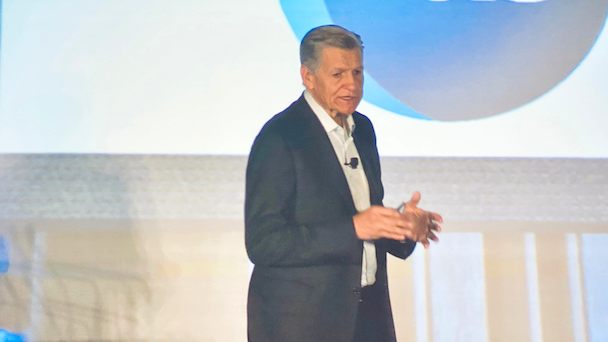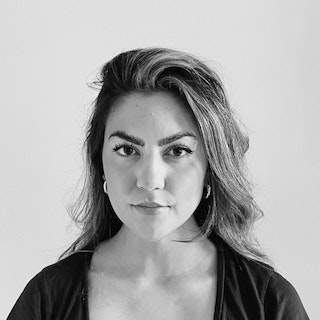P&G’s Marc Pritchard on media priorities: ‘It’s no longer about spending the most’
Procter & Gamble’s chief brand officer is urging media planners, buyers and sellers to “reset the bar” when it comes to assessing reach, frequency, ad effectiveness and working models. Here’s how P&G is leading the way.

Marc Pritchard says P&G is taking new approaches to media to drive reach and ad effectiveness / Kendra Clark
Since bringing many of its media capabilities in-house across its suite of cleaning, health and hygiene brands, Procter & Gamble (P&G) has been able to significantly increase its reach and advertising effectiveness, according to the company’s chief brand officer Marc Pritchard.
Measures of media success can no longer revolve primarily around ad spend, he said. “The current definition of the world’s largest advertiser is about who spends the most money on advertising,” Pritchard said at a keynote talk delivered to a room of marketing and media professionals at the ANA Media conference in Orlando, Florida today. “Celebrating a company as the largest spender implies that it’s better to spend more and more each year. We see it differently. It’s time for a reset. It’s not who spends the most that matters. What matters is who reaches the most consumers with the greatest media precision, the highest advertising effectiveness and the optimum efficiency to deliver sustained growth and value creation.”
Procter & Gamble is “resetting the bar” for media performance, according to Pritchard. The company has been re-evaluating a few key areas, including how it understands its consumer base, how it optimizes media reach, how it achieves optimal ad frequency, how it measures ad effectiveness and how it works more productively with its in-house marketers and agency partners.
Advertisement
Knowing consumers intimately
In focusing on gaining a better understanding of consumers, P&G has focused on “transparent” first-party data collection, which Pritchard said is possible thanks to consumers’ engagement with P&G brands across touchpoints including the web, apps, connected home technology and other kinds of media.
Using proprietary technology, P&G is able to analyze data on consumer habits and practices as well as product impactors over time. The company’s automated analytics tools then inform brand strategies.
Expanding media reach to connect with more consumers
Reach, meanwhile, has been another core focus for P&G. Across its brands, the organization is increasing its audience reach through a range of tactics. Programmatic ad buying and algorithmically driven audience identification (using first-party data insights), in particular, are helping to move the needle.
“There’s no reason to settle for media reach of 50 to 70%,” Pritchard said, especially considering that close to 100% of consumers shop in its product categories. (The executive pointedly asked audience members how many of them brush their teeth and use toilet paper.)
P&G is focused on expanding media reach to a range of 90 to 100% of consumers. Using tailored strategies to reach multicultural audience segments, the company is well on its way to meeting this goal – Tide detergent, for example, has achieved 86% reach according to the latest data.
Plus, with the help of diverse-owned and -targeted media, P&G is breaking into new audience segments. And its efforts to reach multicultural audiences are proving highly effective – an Old Spice push to connect with Black audiences resulted in a 64% higher recall rate and a 28% increase in purchase intent.
Reducing obnoxious levels of ad frequency
Optimizing ad frequency is a key priority for P&G, especially considering the shortcomings of connected TV (CTV) and over-the-top (OTT) media – which still struggle with frequency issues and often inundate consumers with the same messages. “With data analytics and digital technology, we can more precisely reach who we want, cap frequency at a level [that drives] awareness, persuasion and a good consumer experience,” said Pritchard.
His general rule of thumb, even for smaller, emerging brands, is “one ad – maybe two – every week.” If an ad is effective in communicating its message and delivering value, he explained, consumers only need to see an ad a couple of times a week in order to be aware of the brand and have product recall. He pointed out that effective cross-media measurement frameworks – a key concern for the media ecosystem at large – will prove critical in ensuring that consumers stop seeing the same ad too frequently across different platforms.
Advertisement
Combining creativity and data analytics for ad effectiveness
Another core focus for P&G is innovating ad effectiveness. Pritchard argues that this is especially challenging for health and hygiene products, since ads for these products must effectively explain what the product is, how to use it and why it’s better than the competition, all while proving engaging and interesting.
“It’s kind of the gymnastics equivalent of a full twisting double back somersault with a half gainer from a tightrope to a tightrope.” P&G – and other companies – are able to achieve such a feat, he said, by pairing brilliant creatives with the power of strong data analytics and AI to iterate and optimize ad creative for higher degrees of persuasion and effectiveness.
Innovating through in-housing
A key factor for P&G’s growing media success has been a shift away from external partners and toward in-housing. The personal care giant has invested major resources in building out its own capabilities. This includes:
-
Developing data acquisition strategies
-
Creating proprietary analytics and insights mechanisms
-
Designing visual technology and AI tools
-
Upskilling its media planning
-
Optimizing its approaches to negotiations and buying
This shift is helping to expand the skills and scope of work of various P&G brands while “enriching” employees’ careers at P&G, Pritchard said.
A key focus of late has been establishing the company’s proprietary retail media capabilities through programmatic media and shopping data. Search, in particular, has been a priority for P&G – the company has built its own automatic bidding function that enables direct access to retailers’ search programs and automatically adjusts ad-buying content every 15 minutes. The tool has helped increase sales fourfold for some P&G brands.
Of course, P&G has not relinquished all of its media partnerships, and Pritchard said he hopes that brands can “do more work in-house … and strengthen a partnership at the same time to create more value.”
In particular, P&G is seeking partners who can, in Pritchard’s words, “see around corners to innovate in areas such as measurement, stewardship, content, artificial intelligence, immersive experiences, multicultural media, ecosystem development, media supply chain efficiency and the future of media and advertising.”
Inspiring others to ‘reset the bar’
Ultimately, Pritchard said he hopes that media professionals can consider these and other strategies as means of improving media performance.
“I’d encourage you to think about how you can reset the bar – on understanding consumers through data analytics and digital technologies; on media reach … at the right ad frequencies; on advertising effectiveness by working with creative MVPs and [digital] ad tools. [Focus on] discerning what you can do best while challenging industry partners to explore new frontiers of innovation, because it's time to reset the bar on superior brand communication.”
Advertisement
For more, sign up for The Drum’s daily US newsletter here.
